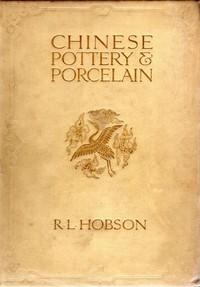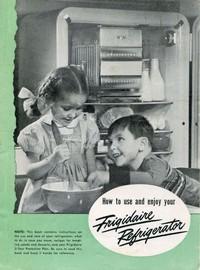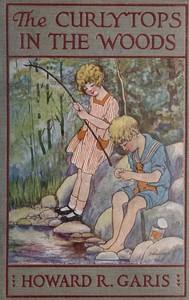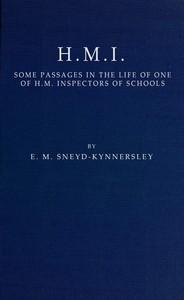|
|
Read this ebook for free! No credit card needed, absolutely nothing to pay.Words: 24821 in 11 pages
This is an ebook sharing website. You can read the uploaded ebooks for free here. No credit cards needed, nothing to pay. If you want to own a digital copy of the ebook, or want to read offline with your favorite ebook-reader, then you can choose to buy and download the ebook.

: Chinese pottery and porcelain; vol. 1. Pottery and early wares by Hobson R L Robert Lockhart - Pottery Chinese; Porcelain Chinese@FreeBooksThu 08 Jun, 2023 Sung dynasty, as already stated, officially manufactured porcelain was sent to the capital, where it supplied the needs of the palaces and great establishments. In the T?ai Ting period of the Y?an dynasty the porcelain factory came under the inspection of the Intendant of the Circuit, who supplied the required wares when orders had been received, and closed the factory if there were no orders . Continuing into the Ming dynasty, the same authority gives details of the various administrative changes which may perhaps be "taken as read," one or two important facts only calling for mention. Thus in the thirty-fifth year of Hung Wu, we are told that the factories were opened, and that supplies of porcelain were sent to the Court. There seems to have been some difference of opinion about the building of the Imperial Ware Factory . Though this great porcelain town has traded with the whole world for several centuries, "bringing great profit to the Empire and to itself great fame" , it seems to have been rarely visited by Europeans, and first-hand descriptions of it are few. We are fortunate, however, in possessing in the letters of P?re d'Entrecolles an intimate account of the place and its manufactures, written by a Jesuit missionary who was stationed in the town in the early years of the eighteenth century. These interesting letters are so well known that I shall not quote them extensively here. The picture they give of the enormous pottery town, with its population of a million souls and the three thousand furnaces which, directly or indirectly, provided a living for this host, and of the arresting spectacle of the town by night like a burning city spouting flames at a thousand points, a description which inspired the oft-quoted lines in Longfellow's "Keramos," shows us the place in the heyday of its prosperity. "During the last forty-five years Ching-t? Ch?n has had time to recover, in a very large measure, from this last calamity, but it is said to be not so busy or so populous as before the T?ai p?ing rebellion. "Everything in Ching-t? Ch?n either belongs to, or is altogether subordinate to, the porcelain and earthenware industry. The very houses are for the most part built of fragments of fireclay that were once part either of old kilns or of the fireclay covers in which porcelain is stacked during firing. The river bank is covered for miles with a deep stratum of broken chinaware and chips of fireclay, and, as far as one could judge, the greater part of the town and several square miles of the surrounding country are built over, or composed of, a similar deposit. A great industry, employing hundreds of thousands of hands, does not remain localised in a single spot for 900 years without giving to that spot a character of its own. "This is perhaps what struck me most forcibly in Ching-t? Ch?n--that it is unlike anything else in China. The forms, the colour, the materials used in the buildings, the atmosphere, are somewhat reminiscent of the poorer parts of Manchester, but resemble no other large town that I have ever visited. "At present there are 104 pottery kilns in the town, of which some thirty or so were actually in work at the time of my visit. The greater part of the kilns only work for a comparatively short season every-summer. During this busy season, when every kiln is perhaps employing an average of 100 to 200 men, the population of Ching-t? Ch?n rises to about 400,000, but of this nearly, if not quite, half are labourers drawn from a wide area of country, chiefly from the Tuch?ang district, who only come for the season, live in rows of barrack-like sheds, and do not bring their families with them." It is interesting to compare this modern account with the Memoirs of Chiang, written in the Y?an dynasty, from which we see that the work was carried on in the same intermittent fashion, the potters receiving land to cultivate instead of payment, living round the master of the pottery, and being liable to be summoned to the kilns when required. The opening of the kilns in those days was in some measure dependent on the success of the harvest, and in any case the work depended on the season, as the paste would freeze in winter, and could not be worked. The hills which surround Ching-t? Ch?n are rich in the materials required by the potters, china clay and china stone of various qualities, fireclay for the seggars , or for mixing in the coarser wares, and numerous other minerals. There was water-power which could be used in the mills for crushing and refining the minerals, and abundant wood for firing. Although coal is worked nowadays not many miles away, the potters still adhere to the wood, which has served their kilns from time immemorial. It should be added that at the present day--and no doubt for some time past--the local clays have been supplemented from various districts, supplies coming overland from Chi-m?n and by water from greater distances. This description of Ching-t? Ch?n has led us far from the period with which we are at present concerned. In the Sung dynasty the place had already arrived at considerable importance, and the record of its 300 kilns implies a very large population. The excellence of its porcelain had already won for it the onerous privilege of supplying Imperial needs, and, as we have seen, it was consecrated under the new and Imperial name of Ching-t? Ch?n in the opening years of the eleventh century. The earliest existing record of its productions, the Memoirs of Chiang, written at the beginning of the fourteenth century, tells us that the Sung porcelains made at Ching-t? Ch?n were pure white and without a flaw, and were carried for sale to all parts under the proud name of "Jao Chou jade." It rivalled the "red porcelain" of Ch?n-ting Fu and the green of Lung-ch??an in beauty. It is not too much to assume that some of this "Jao Chou jade" has survived to the present day, and we may look for it among the early translucent white porcelains, of which a considerable number have reached Europe during the last few years. Many of these have Sung forms and the Sung style, though, of course, plain white wares are always difficult to date. In the specimens to which I refer the glaze is usually of a warm ivory tone, tending to cream colour; it is hard and usually discontinued in the region of the base, both underneath and on the side, and the exposed body is rather rough to the touch. FOOTNOTES: Free books android app tbrJar TBR JAR Read Free books online gutenberg More posts by @FreeBooks
: Phallic Worship A description of the mysteries of the sex worship of the ancients with the history of the masculine cross. An account of primitive symbolism Hebrew phallicism bacchic festivals sexual rites and the mysteries of the ancient faiths. by Jenni@FreeBooksThu 08 Jun, 2023

: How to Use and Enjoy Your New Frigidaire Refrigerator by General Motors Corporation Frigidaire Division - Cookbooks; Frozen foods; Refrigerators Handbooks manuals etc.@FreeBooksThu 08 Jun, 2023
|
Terms of Use Stock Market News! © gutenberg.org.in2025 All Rights reserved.






